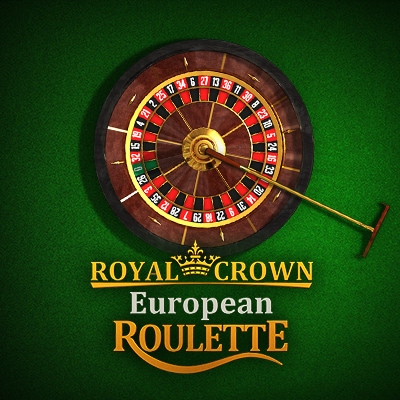1. Introduction: Understanding the Global Significance of Fishing
Fishing has been a cornerstone of human civilization for thousands of years, shaping cultures and economies across the globe. From ancient riverine communities relying on freshwater fish to modern coastal nations exporting seafood, the importance of fishing extends beyond mere sustenance. Today, it plays a vital role in ensuring food security, especially as the global population surpasses 8 billion and demands sustainable food sources.
Connecting recreational and commercial fishing reveals the multifaceted nature of this industry. Recreational fishing fosters community engagement and conservation awareness, while commercial fishing underpins global food supply chains. Together, these facets demonstrate how fishing is intertwined with cultural identity, economic development, and ecological stewardship.
Table of Contents
- The Evolution of Fishing: From Ancient Practices to Modern Technologies
- Fishing as an Economic Driver in Today’s World
- Fishing’s Role in Food Security and Nutrition
- Environmental and Ecological Considerations
- The Cultural and Recreational Dimensions of Fishing
- Future Perspectives: Innovations and Challenges
- Conclusion
2. The Evolution of Fishing: From Ancient Practices to Modern Technologies
The history of fishing reflects humanity’s ingenuity and adaptation. One notable milestone was the invention of the fishing reel in China during the Song Dynasty (960–1279 AD), which revolutionized fishing efficiency and allowed for longer, more sustainable harvests. This technological advancement laid the groundwork for modern fishing gear, supporting larger-scale operations that feed millions.
Biological remnants, such as pelicans, which have existed for over 30 million years, exemplify the deep ecological connections between fish populations and their predators. These birds depend on healthy fish stocks, highlighting the importance of maintaining ecological balance to ensure sustainable fishing practices.
Modern innovations, including sonar technology, GPS mapping, and sustainable gear, have significantly expanded our capacity to harvest fish responsibly. These advancements enable fishers to target populations more precisely, reducing bycatch and minimizing ecological impacts, thus supporting the broader goal of feeding growing populations sustainably.
3. Fishing as an Economic Driver in Today’s World
Recreational fishing alone contributes approximately $115 billion annually to the U.S. economy, supporting millions of jobs and promoting outdoor tourism. This sector encourages responsible interaction with aquatic environments and fosters a culture of conservation.
Meanwhile, commercial fishing remains a global backbone of food security, supplying seafood to markets worldwide. Countries like Norway, Japan, and Indonesia rely heavily on fisheries, which form a significant part of their GDP and employment sectors.
Innovative entertainment products, such as marine slot design, exemplify how modern gaming and simulation tools promote fishing culture, attract new enthusiasts, and educate the public about sustainable fishing practices, blending entertainment with awareness.
4. Fishing’s Role in Food Security and Nutrition
Globally, fish provides a primary source of protein for over 3 billion people, especially in developing nations where fish is often more affordable than other animal proteins. Fish also supplies essential nutrients such as omega-3 fatty acids, vital for cognitive development and cardiovascular health.
However, increasing demand and overfishing pose sustainability challenges. Modern fishing practices aim to balance harvest levels with ecological preservation, employing quotas, protected areas, and seasonal bans to prevent stock depletion. These measures ensure that future generations can benefit from the nutritional value of fish.
Balancing commercial harvest with ecological health is crucial. For instance, Marine Protected Areas (MPAs) serve as refuges where fish populations can recover, ultimately supporting sustainable yields elsewhere and maintaining food security.
5. Environmental and Ecological Considerations
Fishing impacts aquatic ecosystems through habitat disruption, bycatch, and overexploitation of key species. These activities threaten biodiversity and the resilience of marine environments. For example, unsustainable shrimp trawling can damage seabed habitats, leading to long-term ecological degradation.
Sustainable fishing policies—such as quotas, catch limits, and gear restrictions—are vital for conserving biodiversity. Technological innovations, like selective gear and real-time monitoring, help reduce environmental footprints, ensuring that fishing remains compatible with ecological health.
«Sustainable fishing is not just about maintaining fish stocks; it’s about preserving the entire ecosystem that supports life beneath the waves.»
6. The Cultural and Recreational Dimensions of Fishing
Recreational fishing fosters community bonds, promotes outdoor recreation, and supports local economies through tourism. It also plays an educational role, teaching skills, patience, and respect for nature. Products like Fishin’ Frenzy serve as modern tools to engage new anglers, emphasizing the importance of conservation and responsible fishing.
Furthermore, recreational fishing often drives conservation efforts, as anglers become advocates for healthy fish populations and protected habitats. This symbiotic relationship between enjoyment and stewardship strengthens the sustainability of fishing industries.
7. Future Perspectives: Innovations and Challenges in Feeding the World through Fishing
Emerging technologies, such as aquaculture improvements and genetically enhanced fish, promise to increase yields while reducing pressure on wild stocks. Innovations like selective breeding and disease-resistant strains are already making significant impacts.
Sustainable practices, including offshore aquaculture and integrated multi-trophic systems, aim to minimize environmental impacts and maximize resource efficiency. These advancements are crucial for meeting the nutritional needs of a growing global population.
However, international cooperation and effective policies are imperative. Global frameworks like the United Nations Fish Stocks Agreement promote responsible fisheries management, ensuring that fishing remains a viable food source for future generations.
8. Conclusion: Integrating Historical Insights and Modern Practices to Sustain the Role of Fishing in Feeding the World Today
Understanding the history of fishing, from ancient innovations to modern technology, underscores its enduring significance. By combining traditional practices with contemporary sustainable approaches, we can ensure that fishing continues to nourish the world while preserving the ecosystems it depends on.
As we look to the future, embracing innovation, fostering international cooperation, and promoting responsible consumption are vital. Whether through responsible wild-catch methods or sustainable aquaculture, the goal remains clear: to sustain fishing’s critical role in feeding humanity now and into the future.
«Sustainable fishing is a shared responsibility—balancing human needs with ecological integrity to secure a healthy future for all.»




